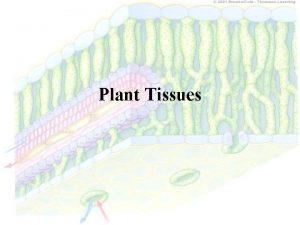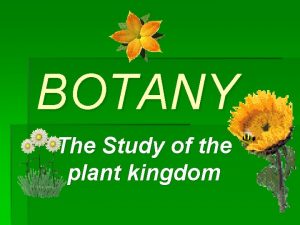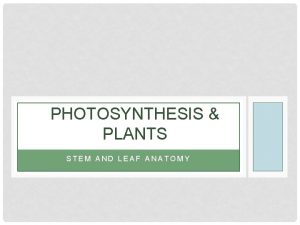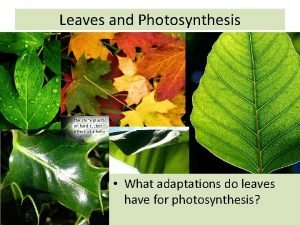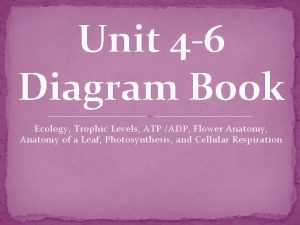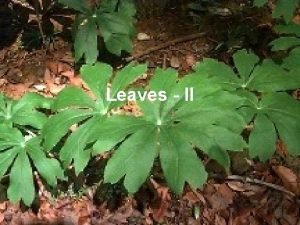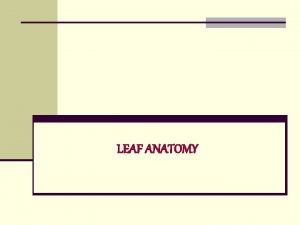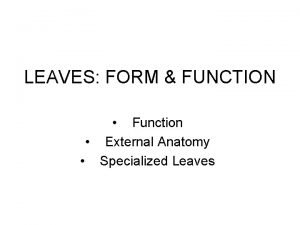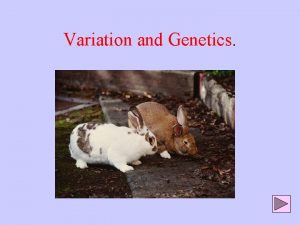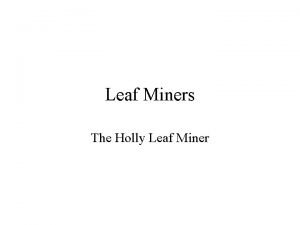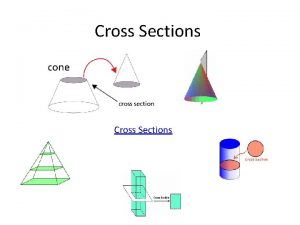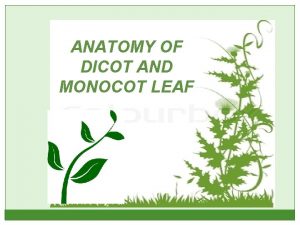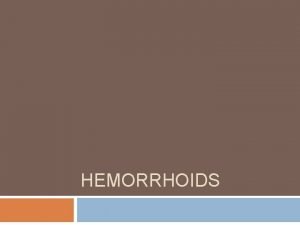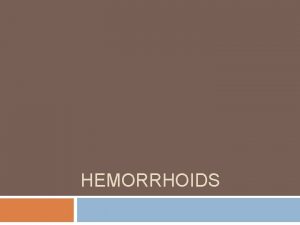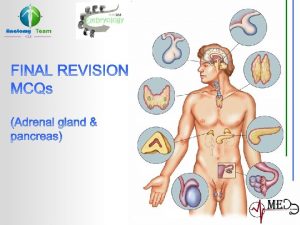Leaf Anatomy Cross Section of a Leaf Leaf













- Slides: 13

Leaf Anatomy

Cross Section of a Leaf

Leaf Tissues A leaf is considered a plant organ and typically consists of the following tissues: An epidermis that covers the upper and lower surfaces An interior parenchyma called the mesophyll An arrangement of veins (the vascular tissue).

Epidermis The epidermis is the outer one- or multi-layered group of cells covering the leaf. The epidermis has several functions: - protection against water loss (a vaxy cuticle) - regulation of gas and water vapor exchange (stomata) - secretion of metabolic compounds - absorption of water (in some species). A multi-layered epidermis

Mesophyll means "middle of the leaf", i. e. the tissues of a leaf that are located in between the layers of epidermis and carry on photosynthesis. The mesophyll of the leaf consists of parenchyma tissue. Since the mesophyll cells contain chloroplasts the tissue is also referred to as chlorenchyma. Chlorenchyma cell

Functions of the Mesophyll In most dicot leaves the mesophyll is differentiated into palisade parenchyma (A) and spongy parenchyma (B). The palisade cells are responsible for photosynthesis because they contain chloroplasts. The spongy mesophyll, together with the intercellular air spaces, allow for the interchange of gases

Vascular Tissue Vascular tissue is a complex tissue. The primary components of vascular tissue are the xylem and phloem. These two tissues transport fluid and nutrients. Vascular tissue is organized into discrete strands called vascular bundles.

Cross Section of Papyrus Leaf e epidermis bb bulliform cells(they cause the leaf to roll up in response to low water availability ) skl sclerenchyma cs vascular bundle

Clivia leaf cross section silná kutikula, ztlustlá epidermis The epidermis has a thick cuticle.

European Yew (Taxus baccata) Cross Section of a Needle X – xylem f - phloem skl – sclerenchyma e – epidermis ku – cuticle ka – cambium pp – palisade parenchyma hp – spongy parenchyma

Rubber fig (Ficus elastica) Cross Section of a Leaf pp - palisade parenchyma e - epidermis cs - vascular bundle hp - spongy parenchyma ku - cuticle st - stoma

Resources Internet: http: //www. ueb. cas. cz/laboratory_of_pollen_biology/pdf_subo r/anatomie_list. pdf http: //cs. wikipedia. org/wiki/List#Anatomick. C 3. A 1_stavba_lis tu http: //botany. upol. cz/atlasy/anatomie. CR 28. pdf commons. wikimedia. org http: //www. uri. edu/cels/bio/plant_anatomy/ www. sci. muni. cz/~anatomy/leaves/html/papyrus_1. htm

Thanks for your attention Lenka Rydvalova
 Secondary growth
Secondary growth Photosynthesis song
Photosynthesis song Zea mays leaf cross section labeled
Zea mays leaf cross section labeled Background
Background Photosynthesis requires
Photosynthesis requires Labelled cross section of leaf
Labelled cross section of leaf Maple leaf and oak leaf homologous
Maple leaf and oak leaf homologous Leaf and non leaf procedure
Leaf and non leaf procedure Leaf anatomy coloring answers
Leaf anatomy coloring answers Kranz leaf
Kranz leaf Leaf anatomy diagram
Leaf anatomy diagram External leaf anatomy
External leaf anatomy Cross bridge anatomy
Cross bridge anatomy Test cross and back cross
Test cross and back cross
